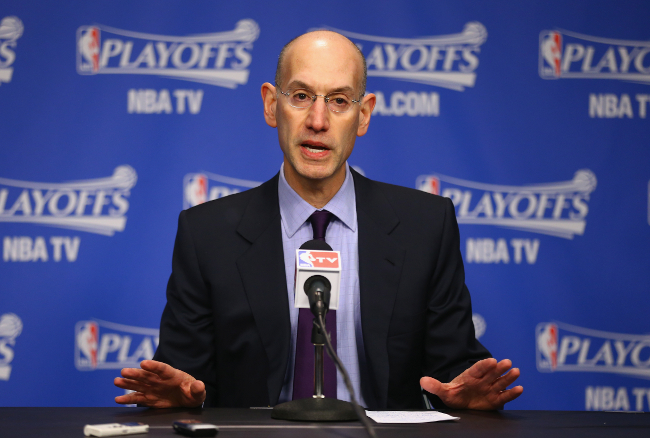
The NBA continues to soar in terms of popularity, but that does not mean it’s a perfect product. Back-to-back games, 4-games-in-5-nights and nonsensical travel schedules continue to wear down players and can cause fans to miss their favorite players. A team with a sub-.500 record that would be at the bottom of one conference could be as high as the seventh seed in another conference.
So it’s safe to say that commissioner Adam Silver has quite a lot on his plate. On Thursday, Silver was in Houston to celebrate the 20th anniversary of the Houston Rockets’ back-to-back title teams. While there, he commented on several pertinent league-wide issues, including the mess of a schedule and the age limit.
“The issue is we have an unbalanced schedule as you know in this league,” said Silver. “While there is a certain appeal to taking 1-16 for the playoffs based on team’s records, in many ways that would be even more unfair to the West, because if you continue with an unbalanced schedule, the Eastern conference teams are playing in some cases easier opponents and so they’re likely to have a better record.”
That Silver chose to talk about the schedule as one of the root causes of the imbalance is notable. The commissioner has made it a point to fix the myriad problems contained within the schedule. To a certain extent, he’s right. Fixing the schedule — whether that means playing less games (highly, highly unlikely) or starting the season sooner — would likely allow for more natural rest for players. That way, we wouldn’t end up with the Spurs resting all of their stars during a nationally televised game or the Warriors resting Steph Curry and Klay Thompson on the first game of a back-to-back.
Another longtime pet project of Silver is addressing the age limit. As far back as last year’s Sloan Sports Analytics Conference, Silver has been on the record as saying the one-and-done rule is bad for both college and the NBA, something he reasserts in this interview. However, Silver doesn’t favor returning to the old model. Instead, he wants there to be a two-year minimum, or at least have the players be 20 years old before they can declare for the draft.
The advantage of this, at least for the NBA, is pretty clear. It’s free development for most teams, as the majority of coaches are loath to spend hours developing talent during the season when they need to focus on actually winning games (except if you’re a team like the Timberwolves of Sixers, for whom development is — or should be — the primary goal).
The two-year minimum would also help the NBA from a marketing and branding standpoint. Save for the rare case like LeBron James or Kevin Durant, rookies are hard to market, as they’re not yet easily recognizable. Force those players to stay in school for two years, and their image/brand can’t help but develop. They’re instantly marketable from the day they step foot on the stage, brand new team hats firmly on their head, shaking hands with Silver after he calls their names.
This is unfair, of course. The NBA can afford to wait two years for a player, but it’s very possible that player can’t afford to wait two years to make it to the NBA and the guaranteed money that first contract brings. Many players come from disadvantaged situations, and the NBA is their sole way of supporting their family by providing them the financial security they need. Forcing them to toil for two years in a situation in which they earn absolutely nothing (no, don’t even start with the value of a free education), puts more of a financial strain on the player and his family.
Plus, there’s the added risk of an injury derailing what could have been an NBA career if they had declared out of high school or after one year of college. Even though rookie contracts are already capped, getting selected in the first round is a guaranteed deal. This way, if they get injured, at least they’ve taken advantage of their opportunity to earn. If they suffer an injury playing in college, and likely fall in the draft, that opportunity is often lost — leaving some players struggling even to keep their scholarship.
Already, the NBAPA has made it clear that they won’t stand for an increased age limit.
National Basketball Players Association general counsel Gary Kohlman said “quite likely the union will be taking a radically different position” than the NBA on the age issue, which will almost certainly be a contentious point between the sides when they sit down.
“If they were white and hockey players, they would be out there playing. If they were white and baseball players, they would be out there playing,” Kohlman said. “Because most of them are actually African-American and are in a sport and precluded from doing it, they have to go into this absurd world of playing for one year.
Given how dedicated Silver’s been to this cause, it’s unlikely he’ll budge on the issue when NBA and the Player’s Association try to hammer out a new CBA. Who’s ready for another lockout?






